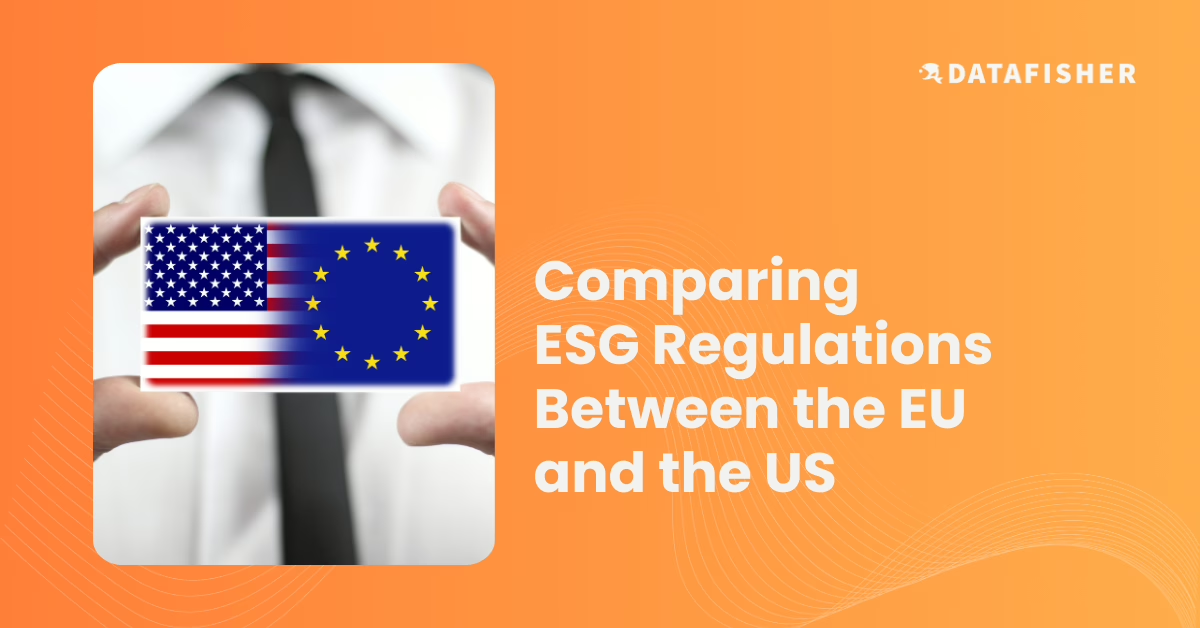Since the introduction of the Paris Agreement in 2015, sustainable finance and Environmental, Social, and Governance (ESG) considerations have consistently been the focal points of global conversations on responsible investing and corporate governance. The European Union (EU) has taken a leading position in integrating ESG initiatives, enacting robust regulations as part of its commitment to a sustainable future. In contrast, the United States (US) has faced a more divided policy environment, with political and ideological differences contributing to skepticism and resistance.
The EU Steps Forward
The EU positioned itself as a global leader in sustainable finance and ESG integration by being the first region to enact a series of regulations that laid the groundwork for a forward-thinking foundation with a long-term vision.
The European Green Deal, a comprehensive initiative proposed in 2019, addressed key areas such as pollution, biodiversity, agriculture, mobility, and carbon reduction. Within this framework, the Sustainable Finance Action Plan (SFAP) and Sustainable Finance Disclosure Regulation (SFDR), both established in March 2019, were integral in promoting sustainable investing and preventing greenwashing. These laws were then merged under the Corporate Sustainability Reporting Directive (CSRD), which was announced in July 2023 and went into law last month. This directive aims to standardize and regulate reporting on ESG matters, ensuring transparency and accountability among corporations.
The EU also introduced the EU Taxonomy in July 2020, a classification system providing clear criteria for identifying environmentally sustainable economic activities. This system aids investors in understanding the environmental impact of their investments, promoting the flow of funds toward truly sustainable projects. The EU’s regulatory approach is comprehensive and multifaceted, encompassing disclosure regulations, green bonds, and ambitious targets like the European Green Deal Investment Plan.
The European Green Deal Investment Plan laid out the EU Commission’s proposed budget plans through 2027. Over this period, it aims to allocate 25% of the EU budget to support climate initiatives, directing funds towards environmental goals across various EU programs.
The US Advances Slowly
In 2017 the US withdrew from the Paris Agreement, citing that climate change mitigation would have a negative impact on the national economy. This action effectively halted any advancement in ESG regulation stateside. With the current administration resigning the agreement in 2021, the country recommitted to global sustainability efforts and is making small advances in progress.
In contrast to the EU, the US currently lacks a comprehensive federal framework regulating ESG. Instead, a patchwork of industry-specific federal and state laws governs ESG reporting, and this scattershot approach to regulation does not apply to all sectors or private companies. With sustainability and social responsibility becoming increasingly relevant to public perception, many large private corporations are voluntarily publishing ESG reports in an effort to convey transparency and enhance credibility with customers, investors, and other stakeholders. These corporations can detail their accountability through voluntary reporting frameworks like the Global Reporting Initiative (GRI) or Sustainability Accounting Standards Board (SASB).
Acknowledging the growing importance of ESG concerns to investors and stakeholders, the Securities and Exchange Commission (SEC) announced the creation of the Climate and ESG Task Force in March 2021. The Climate and ESG Task Force was conceived to develop initiatives for proactively identifying ESG-related misconduct consistent with increased investor reliance on climate and ESG-related disclosure and investment.
Comprising multiple agencies within the SEC, the Climate and ESG Task Force identifies potential violations, including material gaps or misstatements in issuers’ disclosure of climate risks under existing rules, as well as disclosure and compliance issues relating to investment advisers’ and funds’ ESG strategies.
Such initiatives as the Climate Risk Disclosure Act in 2021 and the more recent ESG Disclosure Rules established in March 2022 aim to increase transparency, reporting, and disclosure of greenhouse gas emissions. However, the success of these regulations is uncertain, given the divisive political landscape and resistance to adherence from several states.
Challenges for the US
The US faces significant challenges in achieving a cohesive national strategy for ESG integration. The political landscape, marked by skepticism and pushback, has led to a fragmented policy environment. Individual states have taken divergent paths, with some implementing regulations to limit the role of ESG, particularly in the financial space.
There are currently eight states, including California, Colorado, and New York, that are embracing ESG and enacting state laws to complement the SEC’s efforts. However, they are dwarfed by the number of states that are actively opposed to ESG legislation. As of September 2023, twenty states, including Texas and Florida, have passed anti-ESG laws within their borders. This great divide has created a complex scenario for investors and asset managers who must navigate the turbulent environment of sustainable finance.
Conclusion
The EU has emerged as the frontrunner in global efforts to enforce ESG and sustainable finance regulation with a comprehensive framework supported by initiatives such as the European Green Deal, the Sustainable Finance Action Plan and the Sustainable Finance Disclosure Regulation. The EU’s multifaceted approach includes the Corporate Sustainability Reporting Directive and the EU Taxonomy, providing clear criteria for identifying environmentally sustainable activities.
The US lacks a cohesive federal or state ESG framework, relying on a patchwork of laws, leading to a fragmented policy landscape. While some states are embracing ESG, a significant number have passed anti-ESG laws, creating a challenging environment for investors and asset managers. This stark contrast underscores the differing levels of commitment and regulatory structures between the EU and the US in the pursuit of sustainable finance and ESG integration.
Opportunities for Collaboration
Despite their differences, the EU and the US have opportunities for collaboration in sustainable finance and ESG integration. Sharing best practices and aligning reporting standards can create synergies that accelerate global sustainability efforts.
As the EU continues to set the standard for ESG integration and decarbonization, the US has the opportunity to learn from these experiences and progress toward a more unified and effective approach. Ultimately, the success of these initiatives depends on their ability to drive real-world change, thereby leading the planet toward a more sustainable and equitable future.
